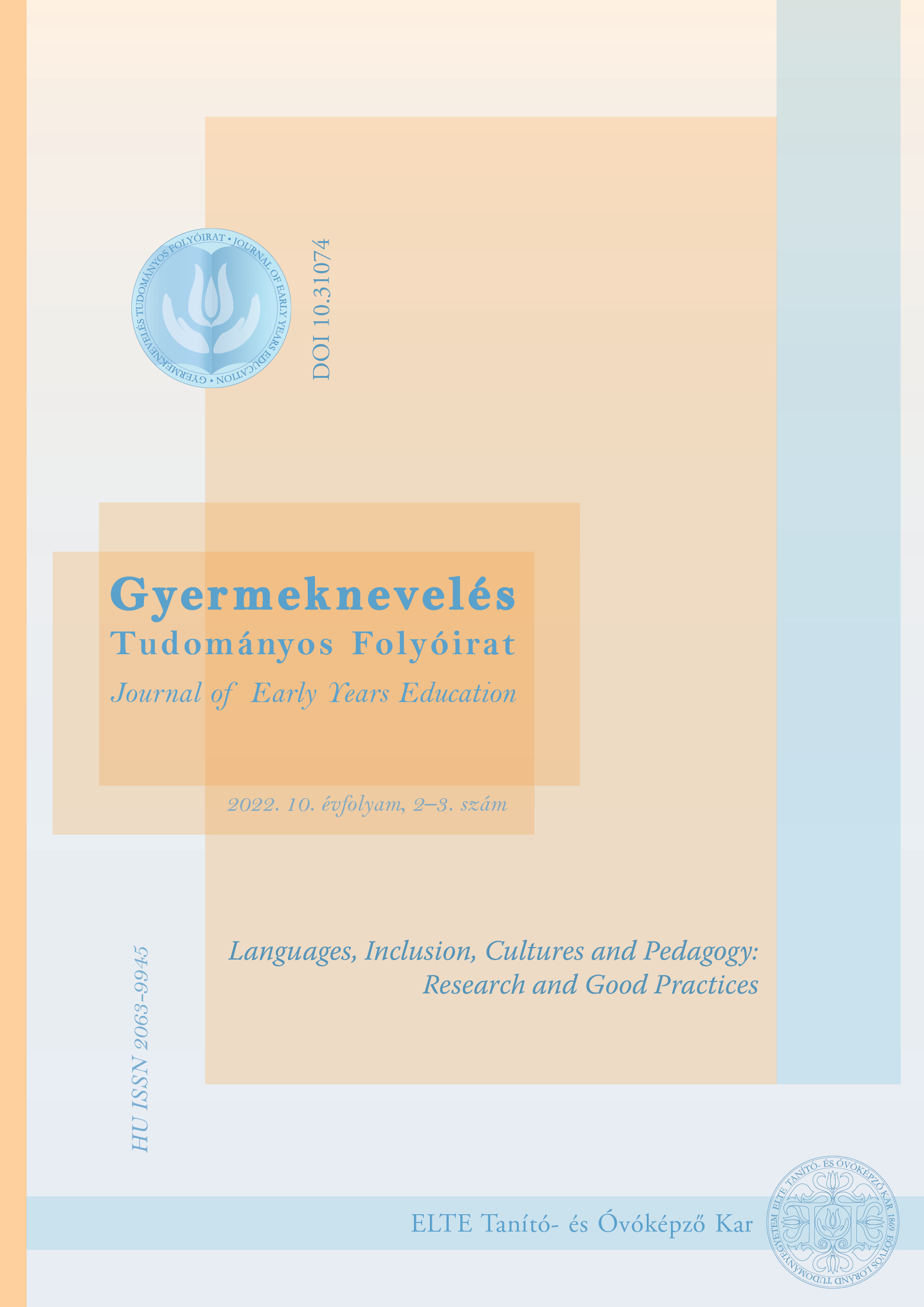Fairy tales or fairy fakes?
DOI:
https://doi.org/10.31074/gyntf.2022.2.289.307Kulcsszavak:
classical fairy tales, rewritten versions of tales, redundant stories, ways of adaptationAbsztrakt
When adults (or children) want to find really good fairy tale books, doing so is not as simple as it seems. Although bookstores are full of children’s books, only some are worth reading. As a result, potential readers are often helpless since they cannot decide which book to choose or what qualities a good fairy tale should contain. Many rewritten versions of tales show some similarities based on the ways they have been adapted. Naturally, the modern versions are not of the same quality and range from quite good versions to absolutely bad ones. This paper will analyse how one particular type of rewritten tale is constructed through the well-know story of Cinderella. In this paper, the tales that have been created on the basis of an original are viewed as ‘redundant’, because they seem to be a kind of extension of the tale, one containing subsequent stories added to the basis. These books are sold as tales, although we will see that they do not meet the requirements of tales at all.
Letöltések
Hivatkozások
Alcantud-Diaz, M. (2012). “The sisters did her every imaginable injury”: Power and violence in Cinderella. International Journal of English Studies, 12(2), 59–71. https://doi.org/10.6018/ijes/2012/2/161751
Antalóczy, T. & Szíjártó, I. (1998). A közlés titkai. A szappanoperák világképéről. Kultúra és Közösség, 2(1), 51–58.
Antalóczy, T. (2001). A szappanoperák virtuális világa. JEL-KÉP, 2, 69–75.
Bárdos, J. (2018). A klasszikus tündérmesék korszerűsége. Pont Kiadó.
Bettelheim, B. (2000). A mese bűvölete és a bontakozó gyermeki lélek. Corvina Kiadó.
Blankier, M. (2017). Adapting and transforming ”Cinderella”: Fairy-tale adaptations and the limits of existing adaptation theory. Interdisciplinary Humanities, 31(3), 108–123.
Boldizsár, I. (1997). Varázslás és fogyókúra: Mesék, mesemondók, motívumok. JAK: Kijárat Kiadó.
Büki, P. (1995). A népmese és a mentálhigiéné. Új Pedagógiai Szemle, 95(3), 48–58.
Disney (2011). Hamupipőke: Az egerek lakomája. In 24 mese téli estékre (pp. 18–22). Egmont Kiadó.
Disney (2020). 365 mese lányoknak. Kolibri Kiadó.
Esterl, A. (2007). A gyermeknek mese kell. Könyv és nevelés, 9(3), 91–101.
Fiske, J. (1991). Understanding Popular Culture. Routledge.
Gyenes, Z. (2009). A mese mint az egyik leghatékonyabb nevelési eszköz. Képzés és Gyakorlat, 7(1–2), 131–140. http://epa.oszk.hu/02600/02641/00040/pdf/EPA02641_kepzes-es-gyakorlat-2009-01-02_131-140.pdf
Hermann, Z. (2012). Varázs/szer/tár. L’Harmattan Kiadó.
Honti, J. (1962). Válogatott tanulmányok. Akadémiai Kiadó.
Kádár, A. (2012). Mesepszichológia: Az érzelmi intelligencia fejlesztése gyermekkorban. Kulcslyuk Kiadó.
Kádár, A. (2017). Saját sorsot varázsolni. In Szávai, I. (Ed.), A mese hídszerepe (pp. 42–57). Pont Kiadó.
Kopházi-Molnár, E. (2016). Olvassunk mesét… de melyiket? avagy rövid barangolás a modern meseátiratok útvesztőjében In Kolosai, N. & M. Pintér, T. (Eds.), A gyermekkultúra jelen(tőség)e (pp. 198–211). ELTE Tanító- és Óvóképző Kar. http://www.e-pakk.hu/gykebook.pdf
Kovács, M. & Stiblár, E. (2014). A népmese megélésének szerepe az olvasóvá nevelésben. In Gombos, P. (Ed.), Kié az olvasás? Tanulmányok az olvasóvá nevelésről (pp. 40–51). Magyar Olvasástársaság.
Mérei, F. & V. Binét, Á. (1985). Gyermeklélektan. Gondolat Kiadó.
Parsons, L. T. (2004). Ella Evolving: Cinderella stories and the construction of gender-appropriate behavior. Children’s Literature in Education, 35(2), 135–154. https://doi.org/10.1023/B:CLID.0000030223.88357.e8
Propp, V. J. (1999). A mese morfológiája. Osiris Kiadó.
Strinati, D. (2000). An introduction to theories of popular culture. Routledge. https://doi.org/10.4324/9780203645161
Tancz, T. (2009). Népmese és szocializáció. In I. Szávai (Ed.), Mint a mesében? (pp. 45–53). Pont Kiadó.
Trentinné Benkő, É., Árva, V., Medina-Casanovas, N. & Canals-Botines, M. (2021). English Language Children’s Literature as a Springboard for Teacher-Researcher International Collaboration. Gyermeknevelés Tudományos Folyóirat, 9(1), 39–56. 10.31074/gyntf.2021.1.39.56 ( 2021. április 30.)
Vajda, Z. (2014). A gyermek pszichológiai fejlődése. Saxum Kiadó.
Vidákovich, T. (2009). A következtetés fejlődésének segítése. In Nagy, J. (Ed.), Fejlesztés mesékkel (pp. 81–104). Mozaik Kiadó.
Zipes, J. (1981). Second thoughts on socialization through literature for children. The Lion and the Unicorn, , 5, 19–32. https://doi.org/10.153/uni.00.033
##submission.additionalFiles##
Megjelent
Hogyan kell idézni
Folyóiratszám
Rovat
License
Copyright (c) 2022 Szerző

This work is licensed under a Creative Commons Attribution-NonCommercial-ShareAlike 4.0 International License.

